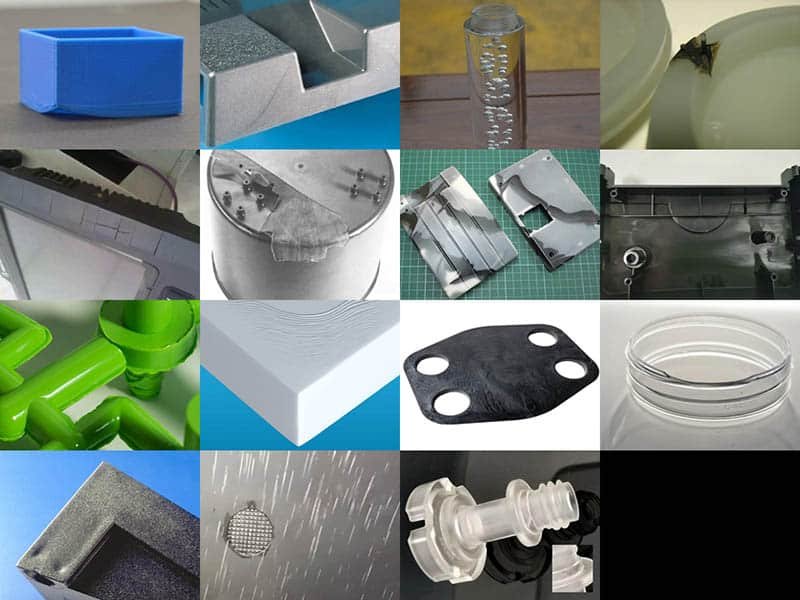Knit lines in injection molding are common plastic molding defects that can significantly affect the quality, strength, and appearance of molded plastic parts. These lines, also referred to as weld lines, are visible defects that occur when two flow fronts of molten plastic meet during the injection molding process. The result is a visible line or seam where the two material flows converge, which often leads to compromised structural integrity, reduced mechanical properties, and an undesirable appearance.
Knit lines occur due to several factors in the injection molding process, and while they are inevitable in some cases, their severity and impact can be minimized with proper techniques.
What Causes Injection Molding Knit Lines
There are various causes for the appearance of knit lines during the injection molding process, stemming from material flow and molding parameters. The most common causes include:
- Flow Front Collision: Knit lines form when two separate flow fronts meet within the mold cavity. If the material has insufficient flow or pressure, the two fronts fail to merge properly, leading to visible defects.
- Material Viscosity: High-viscosity materials are more prone to forming knit lines. The material’s inability to flow smoothly through narrow sections of the mold increases the chances of imperfect flow and subsequent formation of knit lines.
- Mold Design Issues: Poor gate placement, improper venting, and insufficient cooling channels can all contribute to the formation of knit lines. Specifically, gates that are located too far apart or on opposite sides of the mold can create long flow paths, increasing the likelihood of weld lines.
- Injection Speed and Pressure: Slow injection speeds and low injection pressures are key factors in the formation of knit lines. If the material doesn’t enter the mold quickly or with enough pressure, the two molten fronts may not fuse properly.
How to Avoid Knit Lines in Injection Molding
While completely avoiding knit lines may not always be possible due to the nature of injection molding, various steps can be taken to reduce their occurrence and mitigate their impact.
1. Optimize Gate Placement and Design
Gate placement plays a crucial role in the formation of knit lines. By positioning gates in a manner that encourages the material to flow evenly throughout the cavity, manufacturers can reduce the chances of incomplete filling, which leads to weld lines. Utilizing multi-point or side gates helps achieve more uniform filling and minimizes the chances of creating knit lines.
2. Increase Injection Pressure and Speed
Increasing the injection pressure and injection speed ensures the molten material fills the mold cavity more effectively and uniformly. High-speed injection molding can help reduce the cooling time of the material, resulting in smoother transitions where flow fronts meet, and minimizing the occurrence of visible knit lines.
3. Adjust Mold Temperature
Proper mold temperature is essential for optimizing material flow and reducing the formation of knit lines. Too cold a mold can result in premature cooling and incomplete fusion, while too high a temperature can cause material degradation. Maintaining an optimal mold temperature can ensure proper material flow and minimize the chances of defects like weld lines.
4. Control Material Viscosity
Material choice and preparation are essential in minimizing the risk of knit lines. Materials with lower viscosity flow better through the mold, allowing for smoother and more uniform filling. Adjusting processing conditions like mold temperature and material pre-conditioning (e.g., drying) can further reduce viscosity issues.
5. Use Flow Simulation Software
Advanced injection molding simulation software can predict the occurrence of knit lines by analyzing flow patterns and pressure distributions in the mold cavity. By using this software, mold designers can anticipate problem areas and make necessary adjustments before the actual production run, thus avoiding the creation of defects.
6. Use Hot Runner Systems
A hot runner system maintains the temperature of the plastic material during its journey through the runner system, preventing premature cooling and solidification. This technology allows for better control of flow and pressure, reducing the chances of knit line formation in injection molding.
7. Ensure Proper Venting
Insufficient venting can lead to air entrapment, which can create irregular material flow, contributing to the formation of knit lines. Ensuring adequate venting helps maintain the correct flow characteristics, reducing air pockets and improving the material flow dynamics during injection.
8. Optimize Cooling Rates
Properly designed cooling channels and cooling rates play a pivotal role in controlling the flow of material during injection molding. If the cooling rate is inconsistent, it can lead to uneven material flow, resulting in the formation of weld lines. Uniform cooling prevents rapid solidification that interrupts the material’s ability to fuse properly.
Conclusion
Even though there is no way to fully prevent injection molding knit lines, by understanding the root causes-whether it’s related to material flow, mold design, or processing conditions- you can take targeted actions to minimize these defects. Optimizing gate placement, controlling injection speed, and adjusting pressure settings are just a few of the strategies that can mitigate the impact of knit lines.
As experts in injection molding, we help our clients design and produce high-quality parts with minimized defects through precision engineering and advanced mold design capabilities. Get in touch and evaluate your injection molding project!







